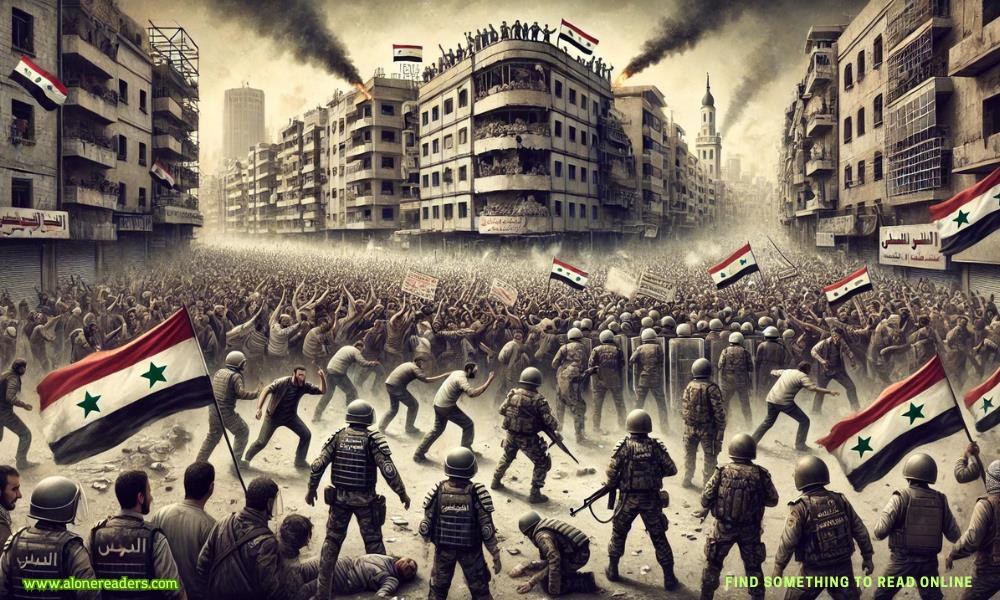
In 2011, Syria found itself at the crossroads of history as protests erupted across the country, challenging President Bashar al-Assad's regime. What began as a hopeful surge for reform soon transformed into a brutal crackdown, setting the stage for a protracted and devastating civil war. The story of Syria's descent into chaos is one of authoritarian resilience, civil resistance, and the complex interplay of regional and international politics.
The roots of the Syrian conflict can be traced back to the broader wave of protests and uprisings known as the Arab Spring, which swept across the Middle East and North Africa. Inspired by the successful toppling of regimes in Tunisia and Egypt, Syrians took to the streets in March 2011, demanding greater political freedom, an end to corruption, and respect for human rights. The initial protests, which began in the southern city of Daraa, were sparked by the arrest and torture of teenagers who had painted revolutionary slogans on a school wall. The heavy-handed response by security forces, which included live ammunition against unarmed demonstrators, only fueled the growing dissent.
As protests spread to other cities, including Damascus and Aleppo, the Assad regime doubled down on its efforts to quash the burgeoning movement. The government's approach was characterized by a combination of violent repression and promises of reform. On one hand, security forces launched deadly crackdowns, employing snipers, tanks, and mass arrests to disperse crowds. On the other, Assad made superficial concessions, such as lifting the state of emergency that had been in place for nearly five decades and granting citizenship to thousands of stateless Kurds. However, these gestures were widely seen as insufficient and insincere.
The brutal suppression of peaceful protests marked a significant turning point. Many Syrians who had initially sought reform within the existing system began to call for the outright overthrow of Assad. The regime's brutality also led to defections within the military and the formation of armed opposition groups. The Free Syrian Army (FSA), composed mainly of defected soldiers, emerged as a key player in the opposition's fight against government forces. As the conflict escalated, the line between peaceful protest and armed rebellion became increasingly blurred.
The Assad regime's crackdown on protests not only intensified the domestic opposition but also drew international condemnation. Western countries, including the United States and members of the European Union, imposed sanctions on Syrian officials and entities. Calls for Assad to step down grew louder, and support for the opposition increased, both in terms of rhetoric and material aid. Meanwhile, regional powers such as Saudi Arabia, Qatar, and Turkey provided varying degrees of support to different factions within the opposition, further complicating the situation on the ground.
The internal dynamics of the conflict were also profoundly influenced by Syria's complex social fabric. The country is home to a diverse population, including Sunni Arabs, Alawites (a Shia sect to which Assad belongs), Christians, Kurds, and other ethnic and religious minorities. Assad's strategy of exploiting sectarian divisions became evident as the conflict progressed. By portraying himself as a defender of minority rights against a predominantly Sunni insurgency, Assad sought to secure the loyalty of the Alawite community and other minority groups. This narrative was reinforced by the presence of extremist elements within the opposition, including jihadist groups like Jabhat al-Nusra and the Islamic State (ISIS), which alarmed many Syrians and international observers alike.
The descent into full-scale civil war had catastrophic consequences for Syria and its people. Cities and towns across the country became battlefields, with devastating effects on the civilian population. The use of heavy artillery, airstrikes, and chemical weapons by government forces caused widespread destruction and loss of life. Entire neighborhoods were reduced to rubble, and millions of Syrians were displaced from their homes. The humanitarian crisis that ensued was staggering, with countless refugees fleeing to neighboring countries and beyond.
As the conflict dragged on, it became increasingly internationalized. Russia and Iran emerged as staunch allies of the Assad regime, providing crucial military and financial support. Iran's involvement included deploying its own forces and mobilizing allied militias, such as Hezbollah, to fight alongside Syrian government troops. Russia's intervention in 2015, marked by a sustained air campaign against opposition-held areas, was a decisive factor in tipping the balance of power in Assad's favor. Conversely, the United States and its allies were more cautious in their engagement, providing limited support to certain opposition groups and focusing primarily on combating ISIS.
The Syrian civil war has had profound and far-reaching implications beyond the country's borders. It has reshaped the geopolitical landscape of the Middle East, exacerbating existing tensions and rivalries. The influx of refugees has placed immense strain on neighboring countries like Jordan, Lebanon, and Turkey, and has also had significant political and social repercussions in Europe. The rise of ISIS, fueled in part by the chaos in Syria, posed a global security threat, prompting international military interventions.
A decade after the initial protests, Syria remains mired in conflict and instability. While Assad has managed to cling to power, much of the country lies in ruins, and the prospects for a political resolution seem distant. The legacy of the 2011 crackdown on protests is a stark reminder of the high human and political costs of authoritarianism and repression. The Syrian people's quest for dignity, freedom, and justice continues, even as the international community grapples with the complex challenges of rebuilding a nation shattered by war.
In conclusion, the Assad regime's crackdown on protests in 2011 was a pivotal moment that ignited the Syrian civil war. The brutal response to calls for reform transformed a movement for change into a protracted and multifaceted conflict with devastating consequences. Understanding the events of 2011 is crucial for comprehending the subsequent trajectory of Syria and the enduring impact of its civil war on the region and the world.